Lancia: Two Men Honor a Dying Italian Legend
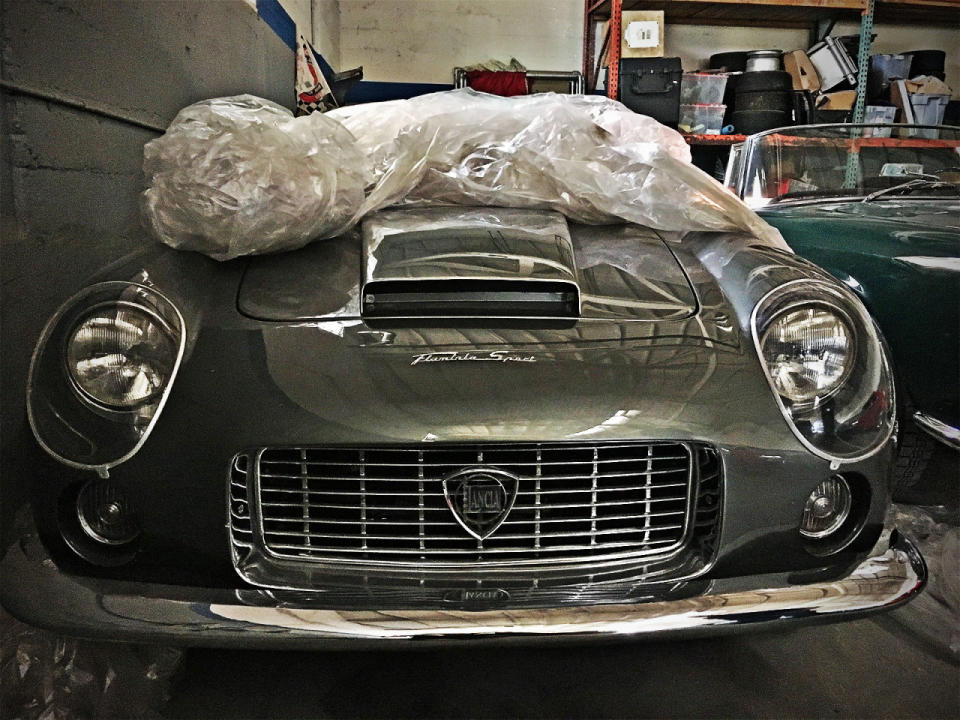
A few decades back, I was in lust with a Lancia Scorpion. Go ahead and Google a picture, I daresay I will be justified in my hopeless devotion. The late ‘70s two-seater – dubbed the Monte Carlo in Europe – seemed to be a mix of so many desirable machines. Its rakish Pininfarina body made it look like a smaller DeLorean, and its mid-engined four-banger gave it the cat-like grace of Ferrari Dino.
Or so I imagined. The car’s brief sales life in the U.S. lasted from just 1976 to 1977. In the ‘80s, I’d spot the occasional Lancia Monte Carlo on the streets of Rome or Paris, but never caught a ride. So the car to this day leaves me with a sense of mystery, just as it leaves most car enthusiasts I talk to saying, “a Lan-whut?”
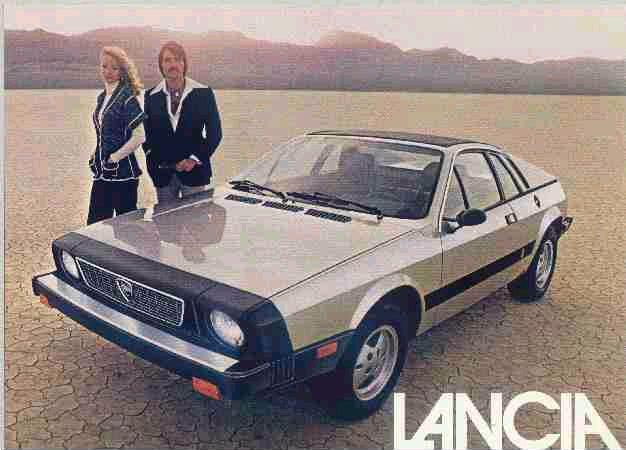
Lancia Scorpion
But Bruce Trenery and Chris Christiansen are not your average gearheads. For starters, the latter works at the former’s exotic car consignment emporium, Fantasy Junction, an automobile enthusiast’s dream palace if there ever was one. Located in Emeryville, Calif., just across the bay from San Francisco, the non-descript warehouse is routinely stuffed with poster-worthy machines.
Today, I’m surrounded by a stunning array of Italian finery, including a $9.95-million 1959 Ferrari 250 GT LWB California Spyder, a futuristic $195,000 1965 Alfa Romeo Sprint Speciale and a sign-of-the-Wall-Street-times $400,000 1985 Lamborghini Countach 5000S. Heady stuff – and yet Trenery and Christiansen are most eager to talk about… Lancias.
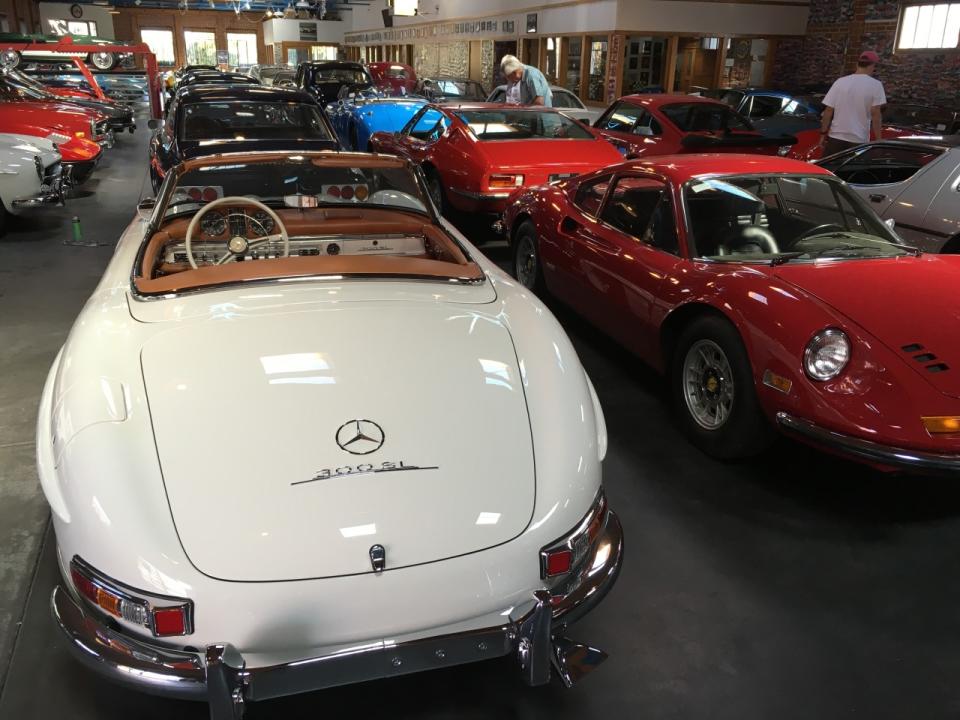
Perhaps that’s especially important now, given that Fiat Chrysler boss Sergio Marchionne all but killed off Lancia, announcing last year that only its Ypsilon model was worth saving, and only for the Italian market. This from a marque that brought us the positively futuristic and winning rally machine, the Lancia Stratos, piloted by the incomparable Sandro Munari.
But so blow the winds of automotive change. In the meantime, these two Bay Area men have been collecting, restoring and just fussing over these cars for half a century. When I asked Christiansen what Lancias he has owned, his matter-of-fact reply was: “one Aurelia B24S convertible, two Aurelia B24 Spiders, three B20S, three Appias, two Flaminia sedans, three Flavias, coupe, a convertible and a sedan, four Fulvias, one Aprillia, one Adera, one Stratos, four Lancia watches and too many books. Oh, yes and a few parts.”
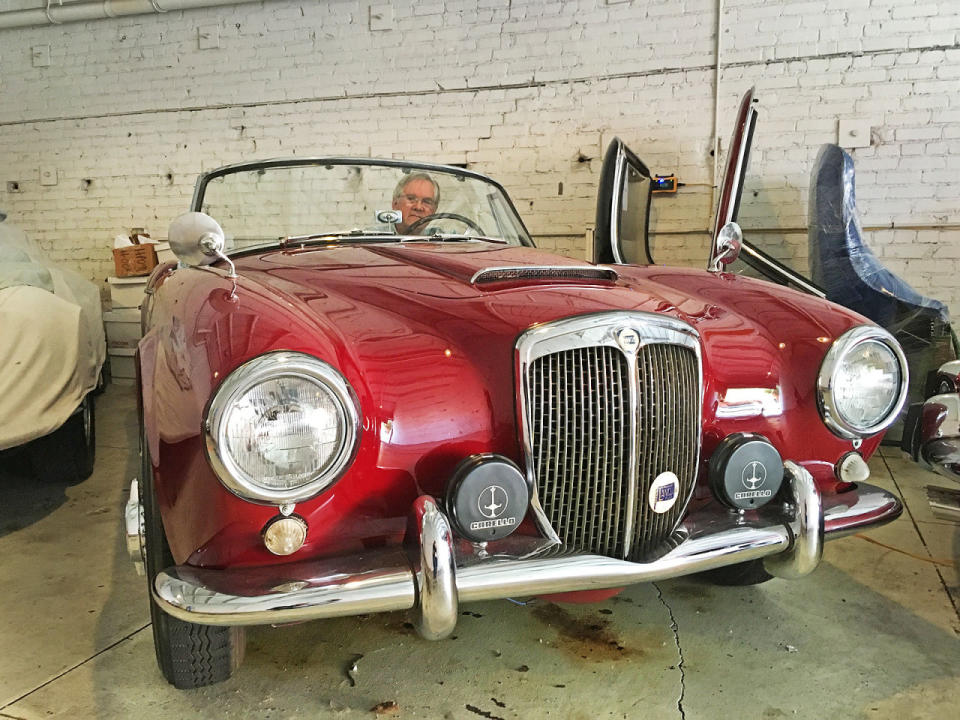
Trenery and his Lancia B24S convertible.
Trenery, who met Christiansen in the ‘70s and who lured him to Fantasy Junction’s team in the ‘90s, calls his buddy “the ultimate Lancia freak.” But that’s not to say he doesn’t have his own voluminous tales of Lancia love. His starts one sunny day in Berkeley, Calif., in the mid-60s, when a teenage Trenery was driving around in his prized $460 Porsche 356 Continental.
“Driving by a local sports car lot, I noticed a beautiful Italian convertible,” he says. “It was a Lancia B24S Aurelia convertible, the first I had ever seen, with an alloy V6 hemi coupled to a transaxle with DeDion rear suspension. This didn’t mean as much to me as how it felt looking over the beautiful hood scoop and listening to the wonderful mechanical sounds of the car.”

The object of his instant desire cost $795. “I traded in the Porsche and all my savings of about $300 and was on my way within an hour. It was black with red leather, and I was totally in love. Most of my friends thought it looked like a big Alfa (Romeo). It did, as it was designed by Pinnin Farina, but to me it seemed much more like the beautiful Ferraris on the pages of magazines.”
Sixty years and many Lancias later, the love affair thrives. Trenery walks past the tightly packed exotics and into a small backroom, where a vintage Ferrari awaits some work next to a swooping gem of an Italian stallion: a different but equally adored 1957 Lancia Aurelia B24S Convertible.
Trenery paid $4,500 back in 1980; he guesses it’s worth around $450,000 today, though a similar if more rare 1955 Spider America version sold for $1.8 million at a 2014 Gooding & Company auction.
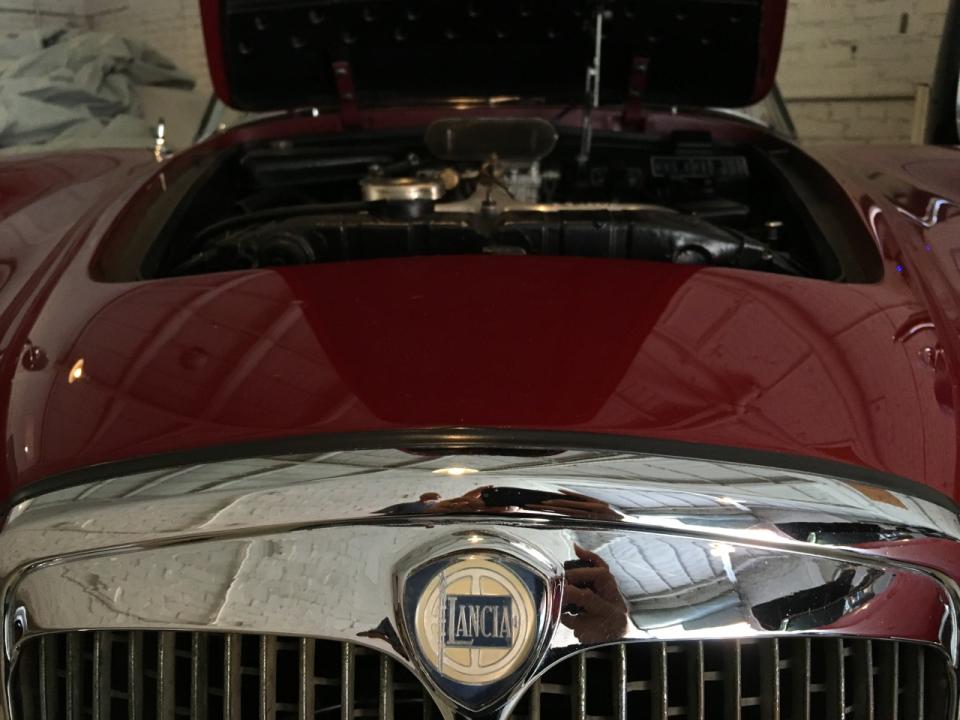
Trenery’s convertible, which he gifted to his son Spencer, another Fantasy Junction stalwart and occasional historic racer, boasts wire wheels, a horsepower-boosting Nardi kit and, perhaps best of all, an attitude that seems wholly different from any other Italian sports car.
Ask either of these two guys what the Lancia appeal is, and you need to prepare for a full-on lecture. But to distill their wisdom, it boils down to engineering prowess mated to coachwork elegance. Christiansen can’t stifle a laugh when he says that the most typical reaction from car fanatics when they look under the skin of a Lancia “is first, ‘Wow!’ and then “Why?’”
Christiansen explains that Vincenzo Lancia, who lived from 1881 to 1937, took a diametrically opposite approach to car manufacturing from his northern Italian fellow racer-turned-builder, Enzo Ferrari. Where Ferrari was all about winning auto races and building production cars to finance that effort, Lancia “reacted to an accident that his mother had in a car and, like a good Italian son, set about building the safest and most sophisticated he could.”
Some of those technological coups included patents for unibody construction and independent front suspension, in 1918 and 1921 respectively, that allowed the company’s debut model, the 1937 Aprilia sedan, to have suicide doors for a light, pillarless body that was sculpted in a wind tunnel. When the Aurelia coupes and convertibles hit the streets in the post-war 1950s, they quickly became favored steeds of the era’s Grand Prix drivers and the subject of curious scrutiny from rival automakers. Lancia’s rear transaxles, semi-trailing arms, front finned alloy drum brakes and rear in-board discs made them cutting edge automobiles for their time.
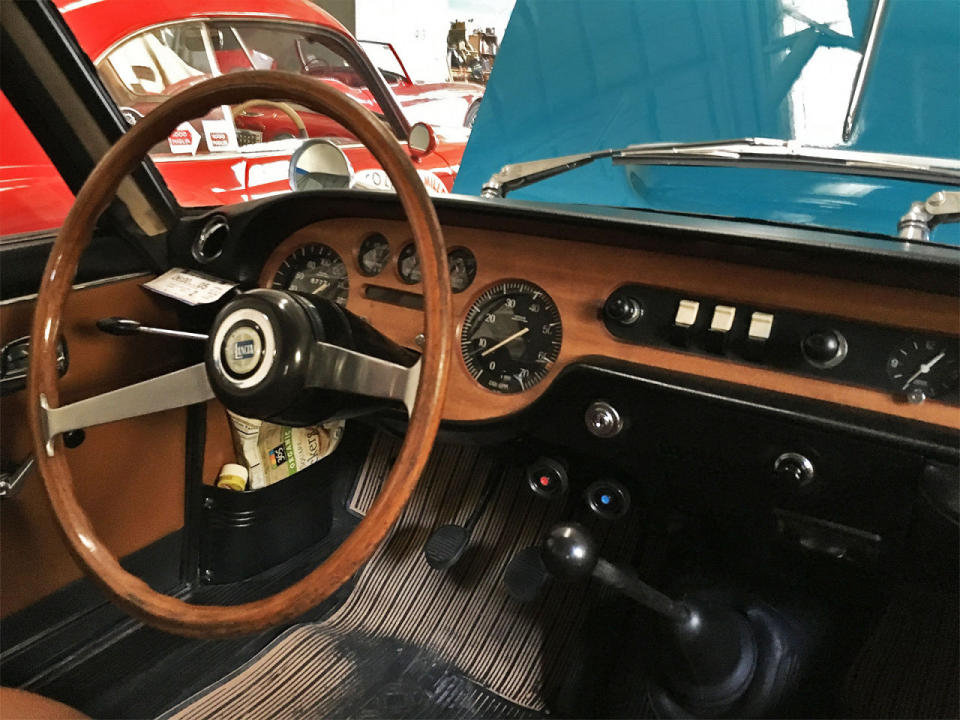
Interior of a Lancia Fulvia – spartan but elegant.
“The Flaminia (an Aurelia replacement, shown at the very top of the page) was, at the time, one of the most expensive cars in the world,” Christiansen says, eyes popping wide. (The model cost around $6,000, or half the price of a new home in 1960.) “It had rear quarter-windows that were pneumatically operated by the front seat occupants. The company used machine brass fittings with O-rings, simply because that was the right way to do things.”
In time, however, Lancia’s penchant for carefully built automobiles didn’t square with the increased automation and growing consumer demand of the latter part of the 20th century. Its subsequent models (Appia, Fulvia and Beta) saw the company both compete with other mass-market offerings as well as change ownership from the Lancia family to a concrete magnate to Fiat, with the company’s models arguably becoming more pedestrian with each passing decade.
Which brings me back to my beloved Lancia Scorpion/Monte Carlo, which despite its looks came under fire for its balky shifting, overbearing engine noise and tendency to rust. The Scorpion of my dreams remains there - in memory only. Just as the company itself may soon pass from living to legend.
No matter. So long as there are guys like Trenery and Christiansen and their fellow Lancia aficionados, the brand will never fade. In fact, if you’re curious – and a Ferrari’s too pricey and an Alfa Romeo’s too common – Fantasy Junction is likely the place to look for a solid Lancia, whose prices can range from the low five-figures for a mid-’70s Fulvia to the high five-figures for a mid-’60s Flavia Sport Zagato.
One caveat. If you come by and ask a few questions of Bruce and Chris, take a seat. You may be there a while.

 Yahoo Finance
Yahoo Finance 